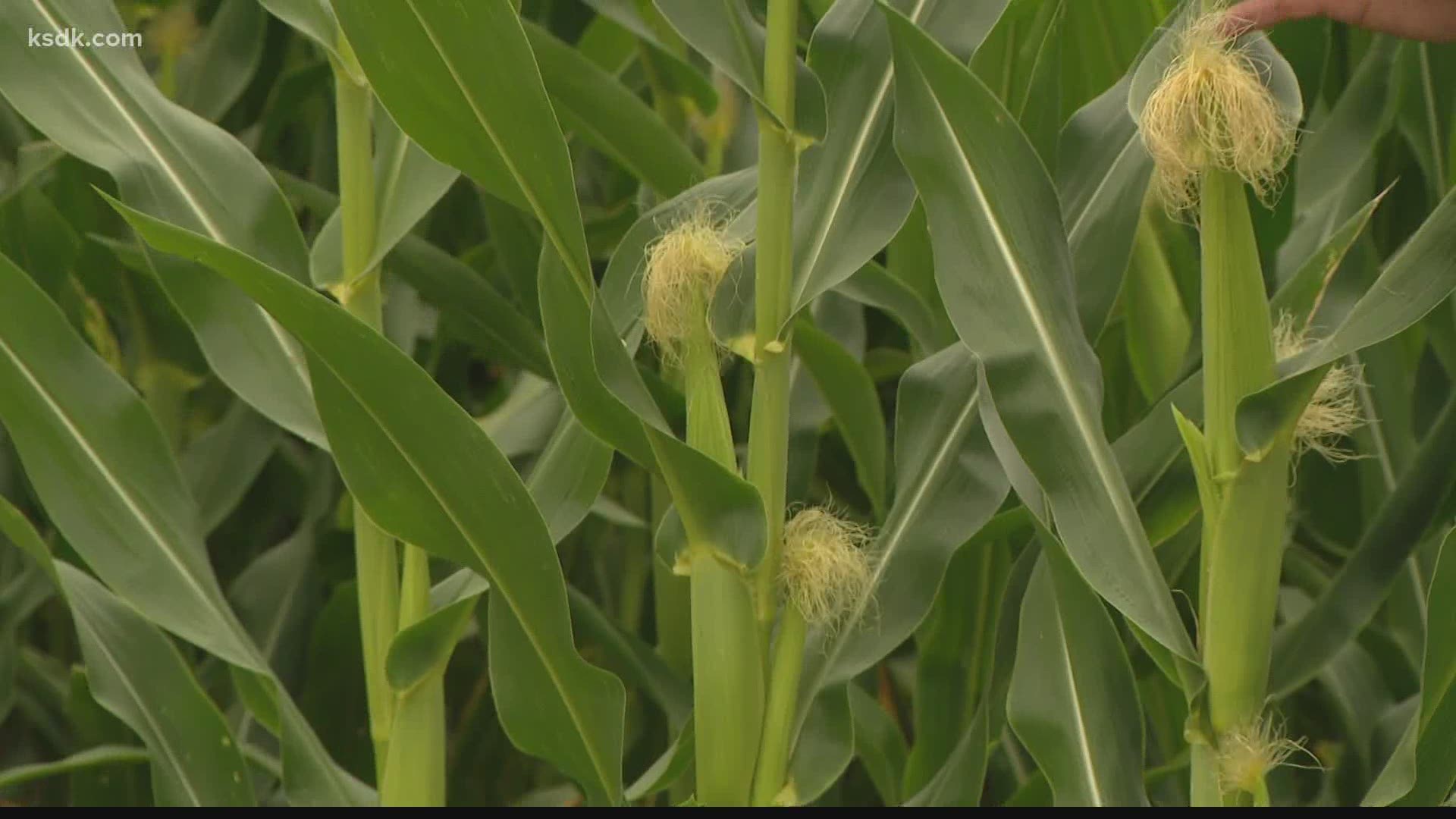ST. LOUIS — There are more than 14 million acres of corn fields in Missouri and Illinois, and like other water-intensive plants, the crop has a large thirst to quench.
Corn plants need one-and-one-quarter inches of rainfall in July and August to maintain rapid growth and produce the best possible yields, according to the University of Missouri. That rain has been hard to come by during the states' recent, repeated droughts.
When droughts hit, corn doesn't just sit idly by. Instead, it continues to "sweat," trying its best to grow by drawing whatever water it can find from the ground, sometimes worsening both humidity and drought for humans living near it. Missouri and Illinois residents may feel that double reckoning this year.
"Corn sweat" is another name for evapotranspiration, the process of plants drawing water through their roots, into their stems and leaves, and releasing it into the air as water vapor. The process contributes to the high amounts of humidity agricultural communities sometimes experience during the summer.
"[Corn sweat]is very localized," said Missouri State Climatologist Zack Leasor. "There's a two-month period from late June to early August when corn is really maturing and moving a tremendous amount of water from the soil and releasing what's left to the atmosphere."
The massive movement of water made by corn often leads to much higher humidity and heat indexes for people living near the fields and other surrounding communities, Leasor said.
That effect is even worsened during times of low atmospheric humidity, with corn "sweating" even more water to make up for the moisture deficit. That will, for a short time, mean even more humidity in the air produced by the corn. Over time, however, it leads to a worsening of drought conditions.
"Eventually, because of added stress to the plant, corn will dry out the soils and run out of water," Leasor said. "This is known as what's called 'flash drought' where things evolve very quickly with damaging impacts to vegetation in just a couple of weeks. They quickly, at first, you see a lot of excess evapotranspiration and moisture, but then it cuts off because there's just no more water supply for the plants."
With extreme summer temperatures expected to push Missouri to its third hottest year on record, the threat of corn sweat is on the tip of communities' tongues. Only time will tell whether rainfall can keep up with the heat, or whether corn will drain the ground dry.
Top St. Louis headlines
Get the latest news and details throughout the St. Louis area from 5 On Your Side broadcasts here.

